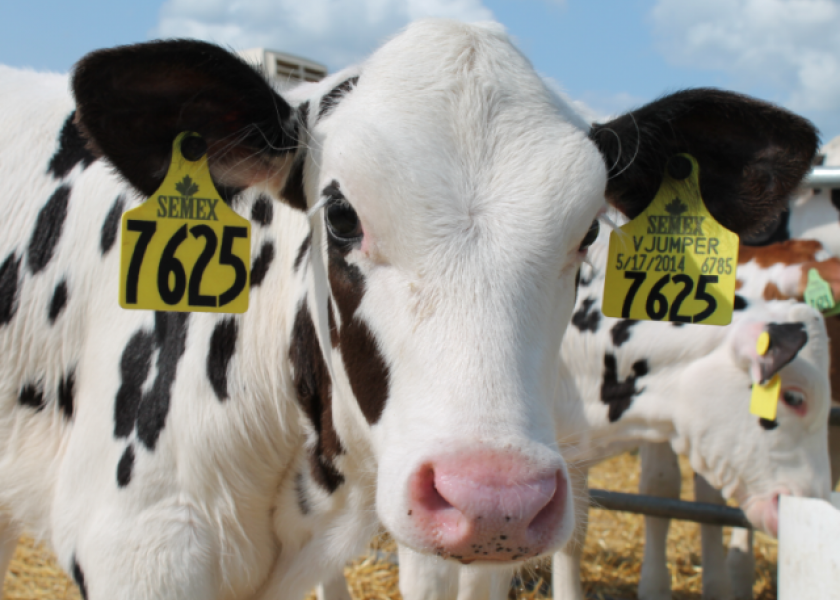3 Tips to Help Calves Thrive During Volatile Temperature Swings

Weather is one of the main factors affecting calf health. As summer heats up, young calves can experience stressful highs during the day, and chilly lows in the evenings, exposing them to temperatures on both sides of their thermoneutral zone in one day. The thermoneutral zone is the range of temperature in which an animal uses no additional energy to maintain its body temperature, for calves it’s normally 60 to 75 degrees F.
When the temperature rises above or below the thermoneutral zone calves require additional energy to maintain their body temperature and grow. If a calf’s nutritional requirements are not met, it will utilize valuable energy stores, which can result in weight loss, impaired immune function and possible illness or death.
“When weather conditions are rapidly changing it can wreak havoc on young calves that crave consistency,” says Christie Underwood, Ph.D., calf and heifer specialist with Purina Animal Nutrition. “In addition to the temperature adding stress to calves, during volatile weather we often see more mold in feed buckets and bedding that becomes unsanitary. We can also see an increase in respiratory disease.”
To help producers adapt to changing weather patterns the USDA completed a study and detailed report on climate change, noting negative impacts to animal health, growth and reproduction. They encourage producers to proactively manage environmental conditions and reduce risk by being prepared. That includes having a strategic plan to adjust to changing conditions, properly educating and training employees to recognize animal needs and potential stress levels, and having a plan to mitigate the stress impact.[1]
To keep calves healthy and growing consistently Underwood recommends three important management practices:
- Match feed to seasonal need: Utilizing a high quality calf starter that is nutritionally balanced, proven to meet the animal’s needs and formulated to match the challenges of the season can help ensure calves receive the optimal balance of energy and protein needed to thrive during periods of stressful temperature swings. Research has shown that calves fed seasonal formulations have greater growth and average daily gain.[2]
- Keep water and feed fresh at all times: When weather is volatile and it changes from wet conditions to heat, it can cause feed in buckets to go stale or mold, which can lead to potential digestive upsets and calves going off feed. Keep calves eating and growing by ensuring they always have fresh feed and water, and that employees never top off buckets.
- Put employees on high alert for illness: Diseases, like pneumonia can negatively impact a calf’s future production potential. Training employees to look for early signs of illness, such as decreased feed intake, droopy eyes and ears, and checking calves more frequently during times of increased risk can help them recognize a calf that’s becoming ill and take corrective action sooner.
Utilizing these management tips in your calf program will help keep your animals healthy and growing during volatile temperature swings, but Underwood stresses feeding calves the volume of nutrition that they need to meet environmental challenges as the most important step.
“Producers desire the same performance out of all of their animals year-round, so to achieve that we have to adjust our management practices to the challenges that face us,” says Underwood. “One of the best ways to do that is to focus your feeding program and management strategy to the different nutritional needs of calves throughout the year.”
Source: Purina Animal Nutrition LLC
[1] Walthall et al., 2012. Climate Change and Agriculture in the United States: Effects and Adaptation. USDA Technical Bulletin 1935. Washington, DC. 186 pages.
[2] Purina Animal Nutrition conducted multiple field trials in the Summer 2012 using competitors’ custom formulations that were 18, 19, 20, 21, or 22% crude protein (CP) as well as Cargill® 20 or 23% CP diets compared to calves fed either AMPLI-Calf® Warm Weather Starter feed 20 or 22% CP for a 12 week period.







